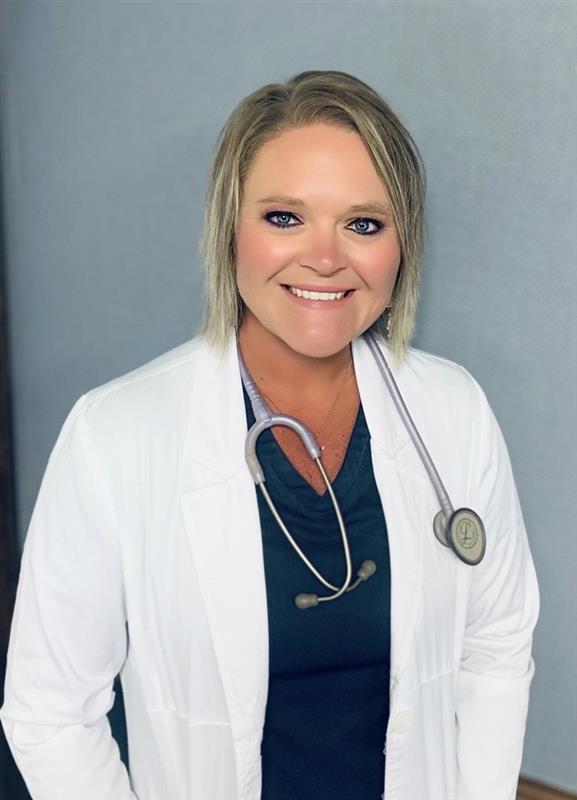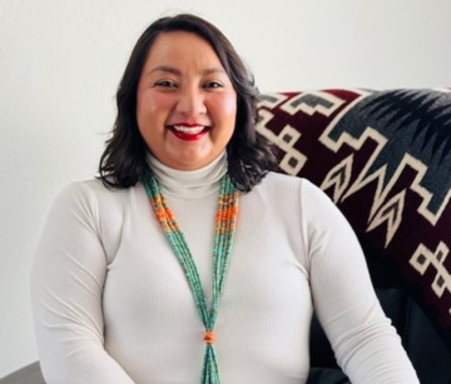Virtual primary care: Taking health care to the next level
Key takeaways:
- The pandemic accelerated the shift from in-person to virtual care.
- Virtual care offers easy, convenient access to high-quality care.
- Building patient relationships virtually is as effective as in-person.
- Virtual care improves work-life balance for both providers and patients.
- Optum virtual care is at the forefront of this health care revolution.
Lauren D., FNP-BC, a primary care provider with Optum virtual care, shares her perspective on delivering quality care in a virtual setting.
When the health care industry was challenged with delivering care amid a pandemic, it became evident that the traditional approach to care was no longer enough. Overnight, health care changed, and providers needed to rapidly switch gears from delivering in-person care to virtual care to meet their patient’s needs.
This shift to virtual care isn’t going away. It’s been quickly adopted by both patients and providers as a preferred method for easy, convenient access to high-quality care. Nurse practitioner Lauren D. shares this first-hand experience as she has quickly learned how important virtual visits are for meeting the needs of her patients and the community.
Creating positive patient relationships
Building connections and relationships with patients virtually is no different than in-person. Whether face-to-face on a screen or in the same room, that connection happens through active listening and dialogue. In my experience, patients are more relaxed in their preferred setting over video than they are in-clinic. They quickly forget they are even on camera, and it feels like we are together in an exam room.
While my job is to address patients’ immediate health needs, it’s also important to help them feel comfortable and connected to the primary care experience. This involves understanding their history and health and wellness goals, but it goes beyond that. I’m also focused on personal conversations like hearing about their recent vacation or seeing their fur babies or human babies on camera.
The reward for the primary care clinician comes from the care relationship that develops over time with continuity, and virtual connections are now an integral component of the care continuum. The reward for the patient is the trust that develops with the clinician over time, improving health outcomes and overall well-being. This trusting relationship forms just as easily on video as it does in the clinic.
Ensuring diagnosis accuracy
As an experienced nurse practitioner, I often will start formulating a working diagnosis and plan as I actively listen to the patient — even before starting an exam or reviewing diagnostic results. This is where the true practice of medicine and the development of a relationship and trust between clinician and patient is of utmost importance. I feel my diagnostic skills have sharpened due to this experience of delivering telemedicine.
Personally, I have enjoyed breaking from my usual diagnostic thought processes that have been a staple for the past 15 years with traditional in-person visits. As a lifelong learner, this unexpected change has been very professionally satisfying. On the flip side, I am also realistic and know that we cannot deliver primary care 100% virtually all the time. So, what happens when the virtual patient has a brick-and-mortar need?
What sets Optum virtual primary care apart is that our model coordinates the full 360-degree care continuum for the patient. This could be a lab or X-ray, immunization, specialist referral, or physical examination component. Our virtual care navigators and health assistants provide the member with the needed coordination for these care extensions, focusing on care excellence, coverage, and convenience.
Improving work-life balance
In any field, working virtually can help improve work-life balance. By having the ability to work from home, I spend no time commuting, I am able to throw in a load of laundry between patients, I can get to my daughter’s 5:30 p.m. volleyball games, I am at home when my kids get home from school, and I save money by eating at home for lunch and not having to fill up my gas tank multiple times a week. This goes a long way in reducing my stress, and my family loves it.
Virtual care also provides flexibility for my patients. Generally, they are more responsive to my recommendations and are more likely to follow up with me. We are all busy, and time is precious. Patients are getting the care they need, when they need it, wherever they are.
"I have discovered that my patients feel more comfortable meeting from their own setting, in contrast to the sterile (scary) environment of the clinic. In short, they love the experience as much as I do."

Looking to the future with Optum virtual care
Telehealth is changing the face of health care and is requiring that health care organizations and providers adapt quickly. The goal of Optum virtual care is to increase access, reduce costs, and improve outcomes while optimizing the experience of giving and receiving medical care. Over the past 2 years with virtual care, I have seen first-hand the gap that virtual care closes and the positive patient outcomes. From managing diabetes, hypertension, obesity, or common viral illnesses, virtual care patients receive top-notch care from the best providers in the industry.
Optum is one of few virtual health organizations offering primary care, and it has and will continue to take telehealth to the next level. I am proud to be a part of this health care team and organization.
Interested in joining the Optum virtual care team?
View open positionsAbout the Author
Lauren C. D. DNP, FNP-BC
Nurse Practitioner, OVC, Virtual Primary Care
Lauren D. is a family nurse practitioner and has been with Optum virtual primary care for 2 years. She has been a NP for 15 years with experience in family medicine, urgent care, emergency medicine, hospice, and psychiatric care as well as a lecturer in higher education. She received her Bachelors, Masters, and Doctorate degrees from Clemson University in South Carolina where she resides.
As a nurse practitioner delivering virtual primary care, she sees firsthand the day-to-day challenges facing the patient regarding access of care, resources, and patients finding time for quality health care in their busy lives. She is focused on finding solutions, one of which is continuing with innovative care delivery via telemedicine.
She is passionate about understanding the barriers that impact population health and responding with creative strategies to help deliver care to patients on their own terms. She focuses on early detection and early intervention as well as prevention strategies to improve the virtual patients’ lives while meeting them where they are, whether that is at home, work, school, sitting at a park, or on vacation.



Share This Story